
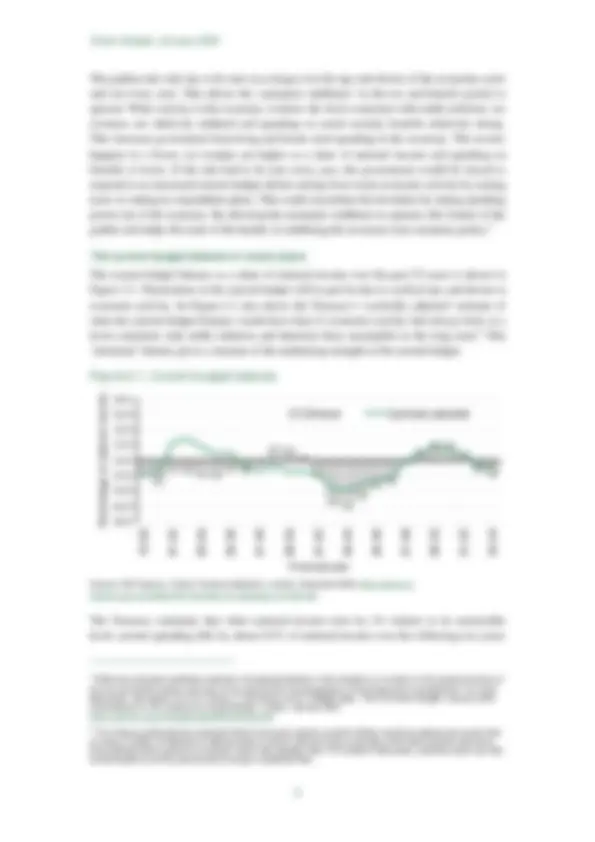
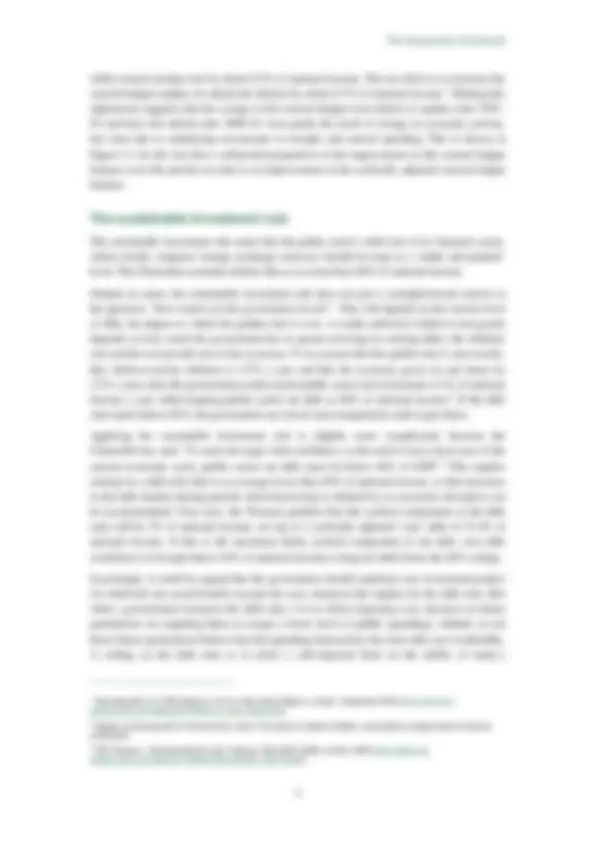
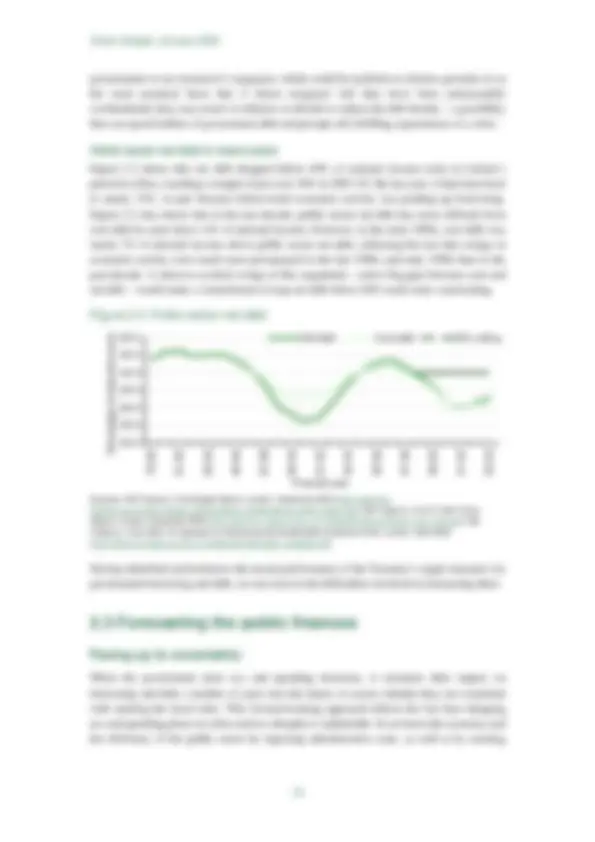
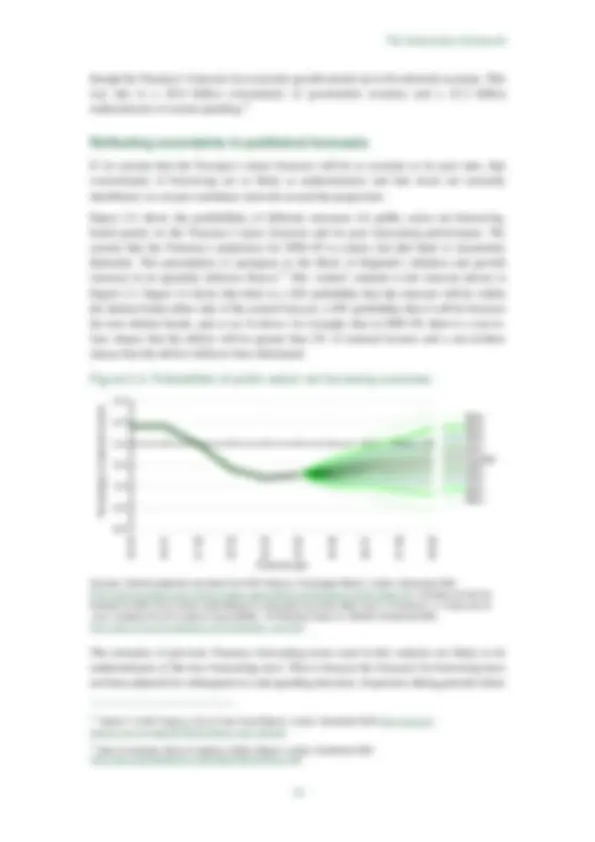
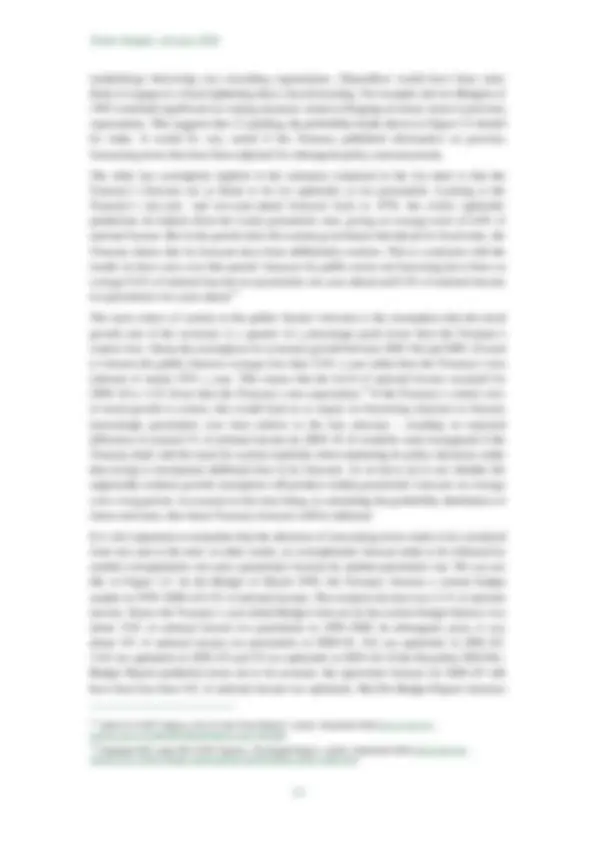
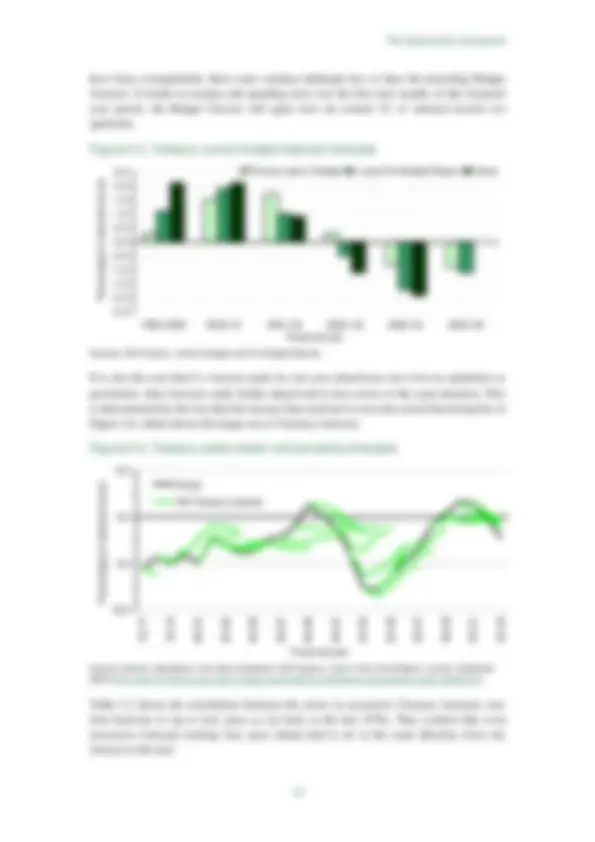
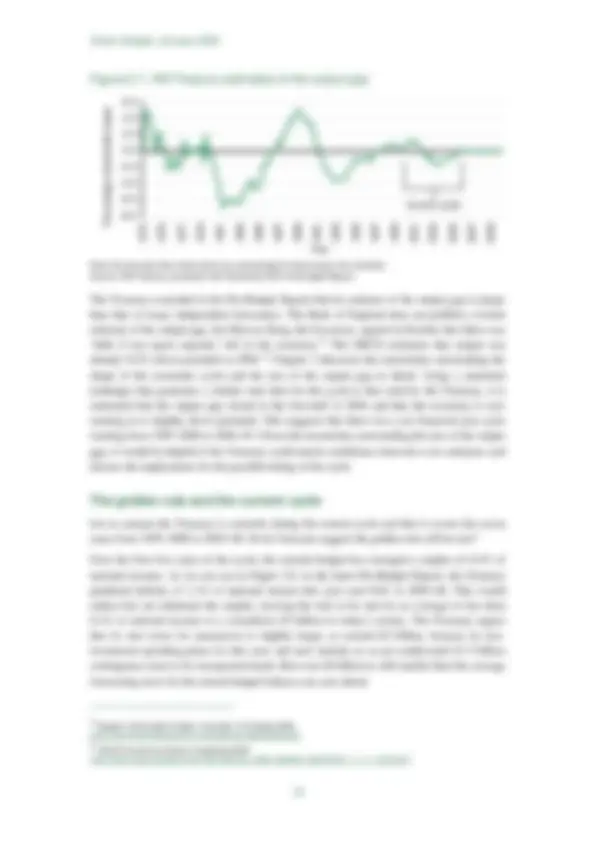
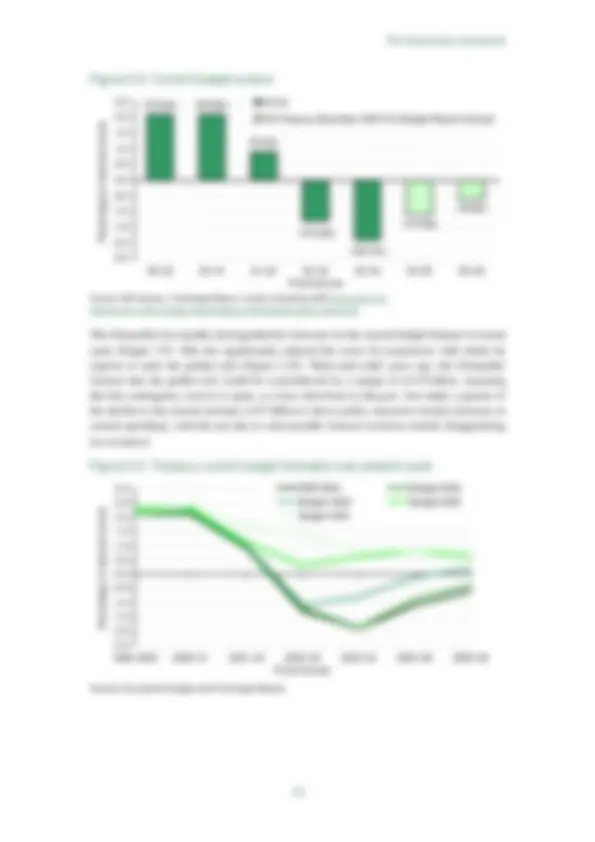
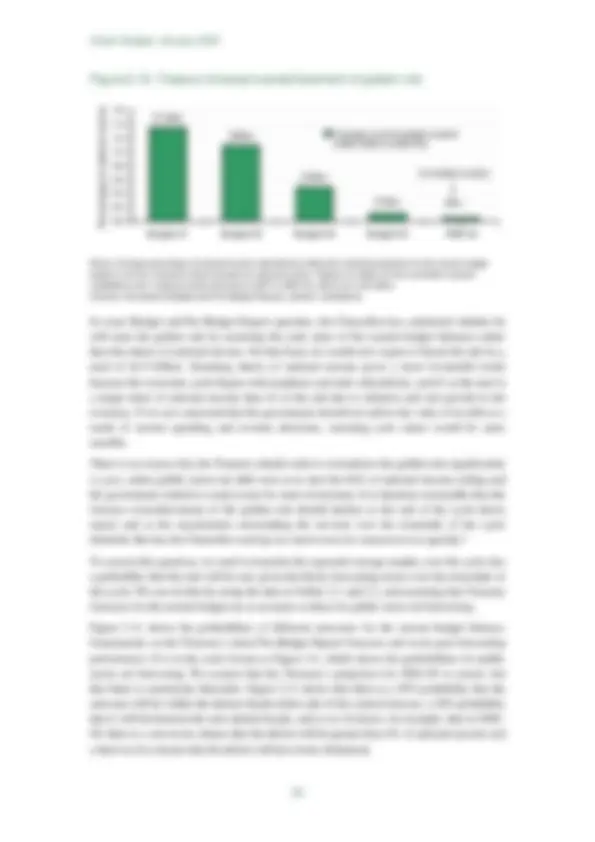
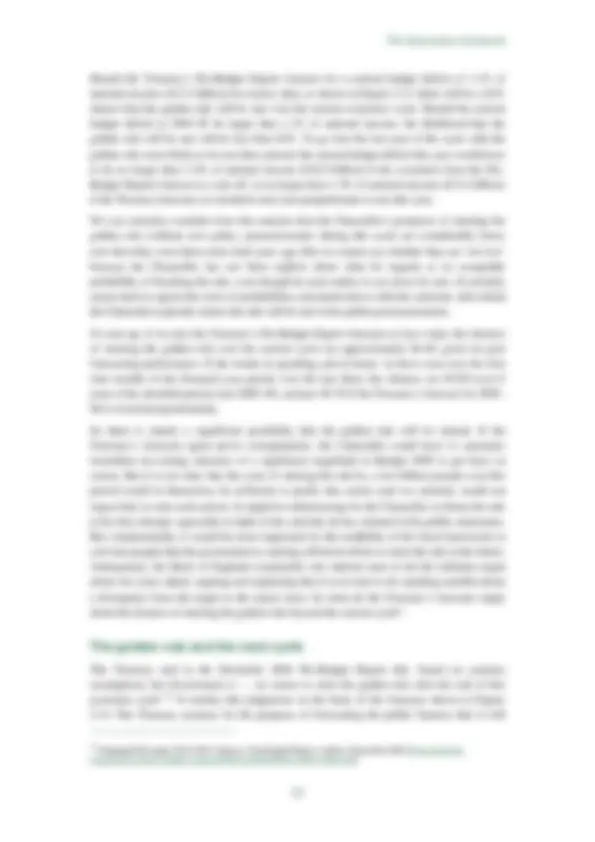
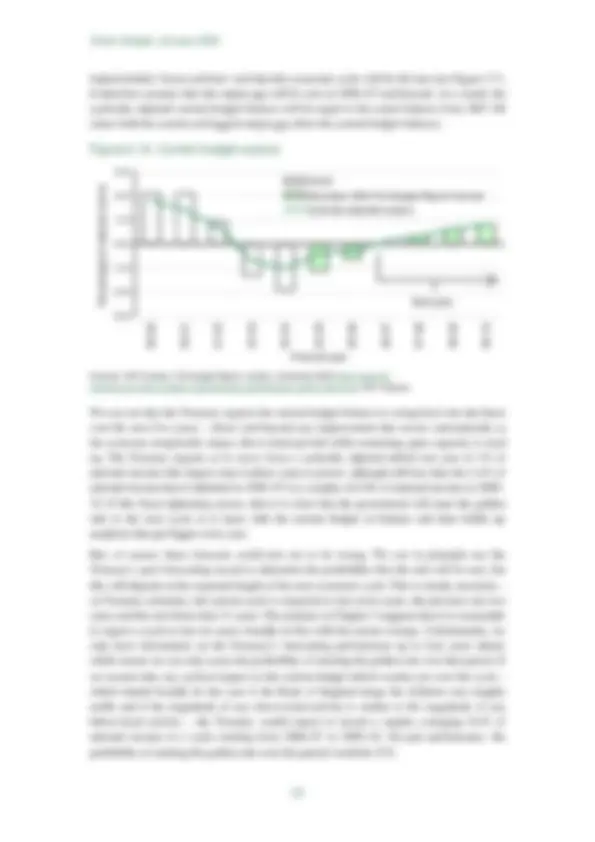
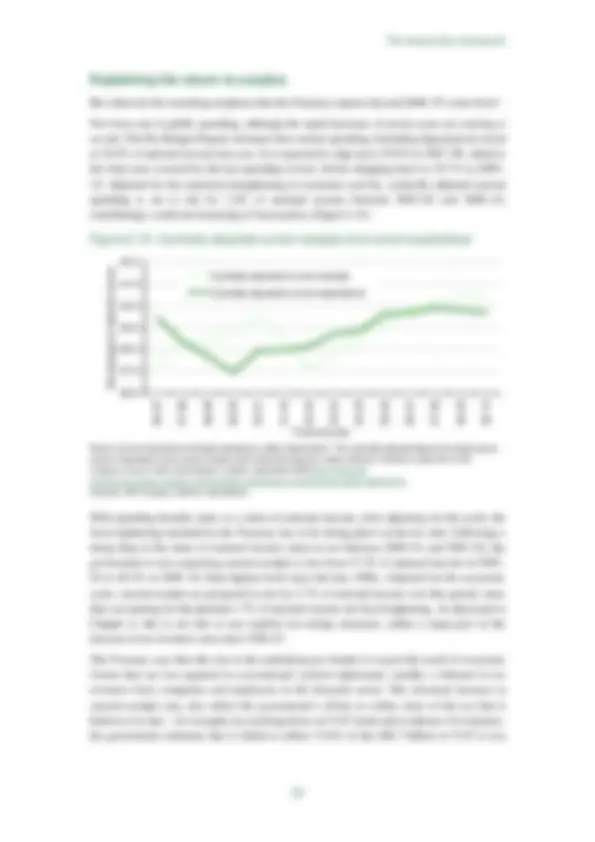
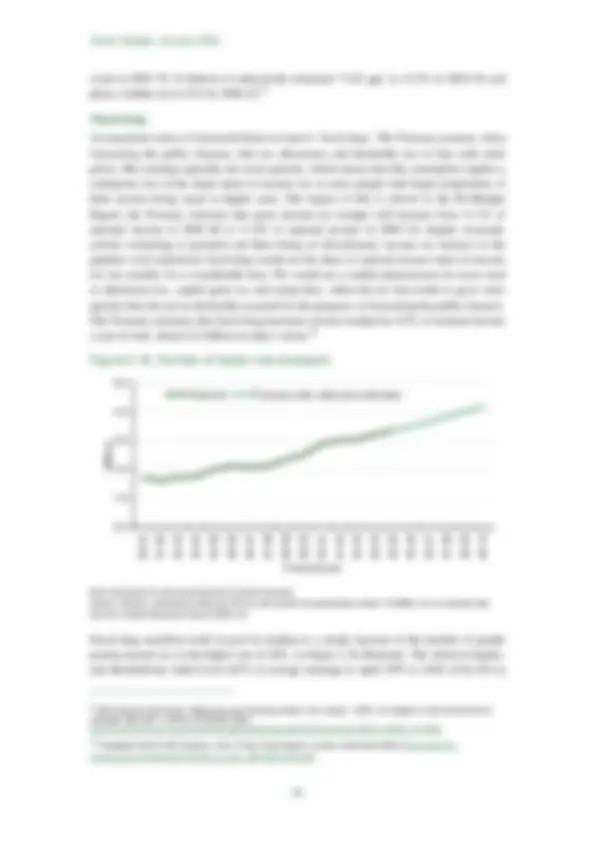
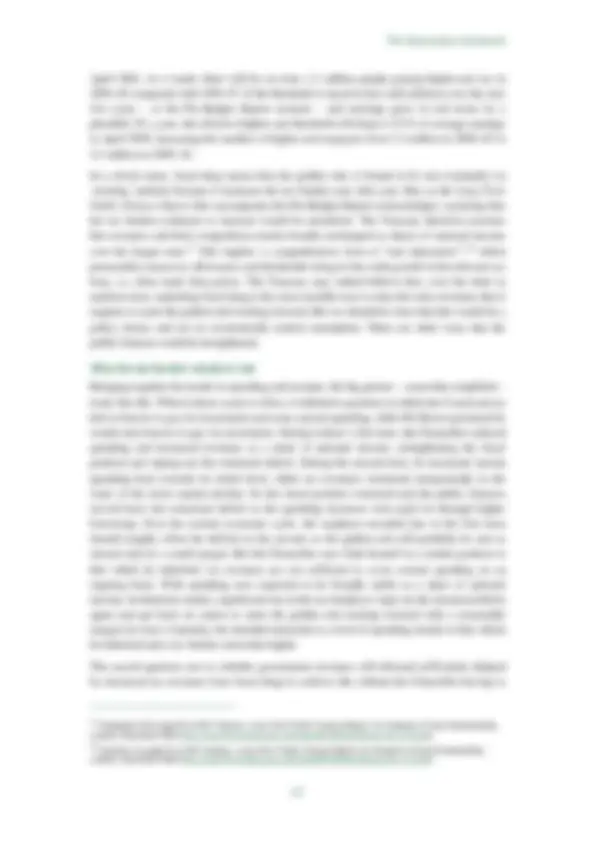
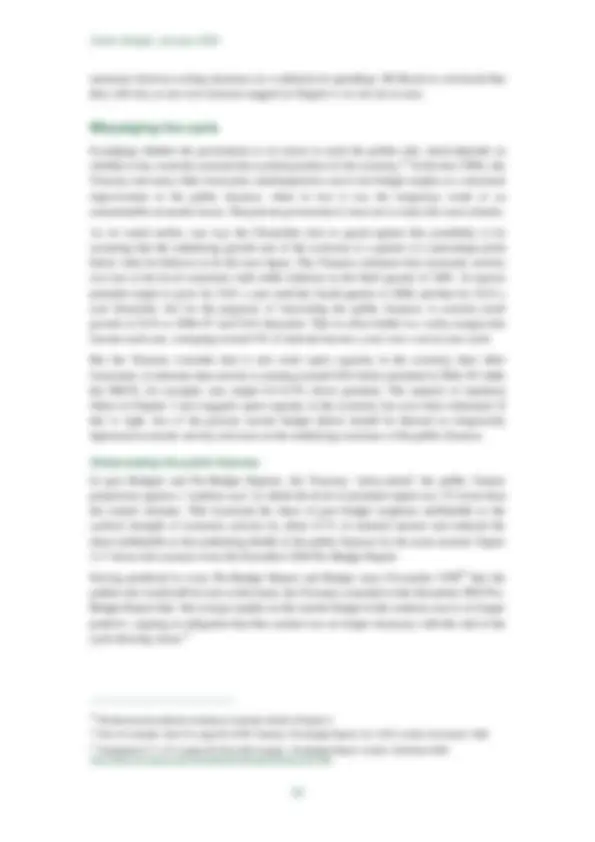
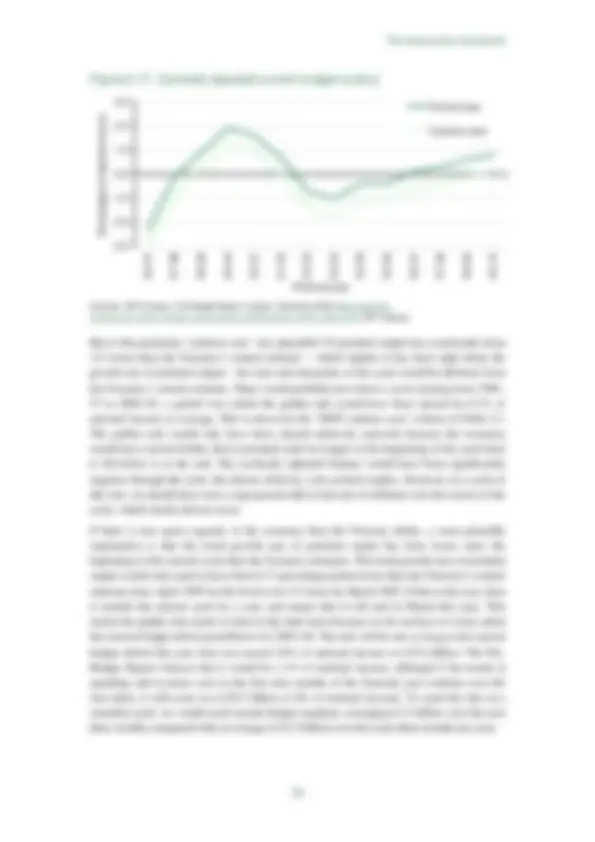
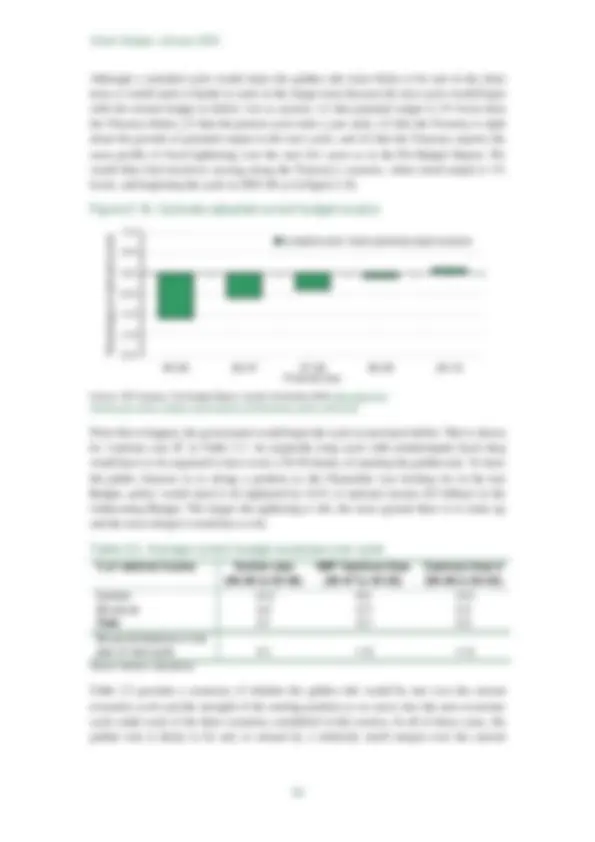
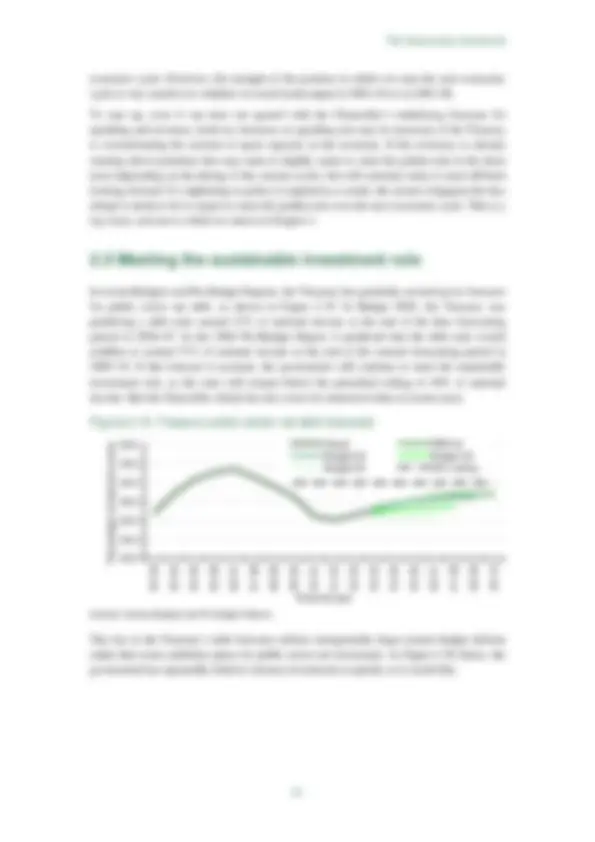
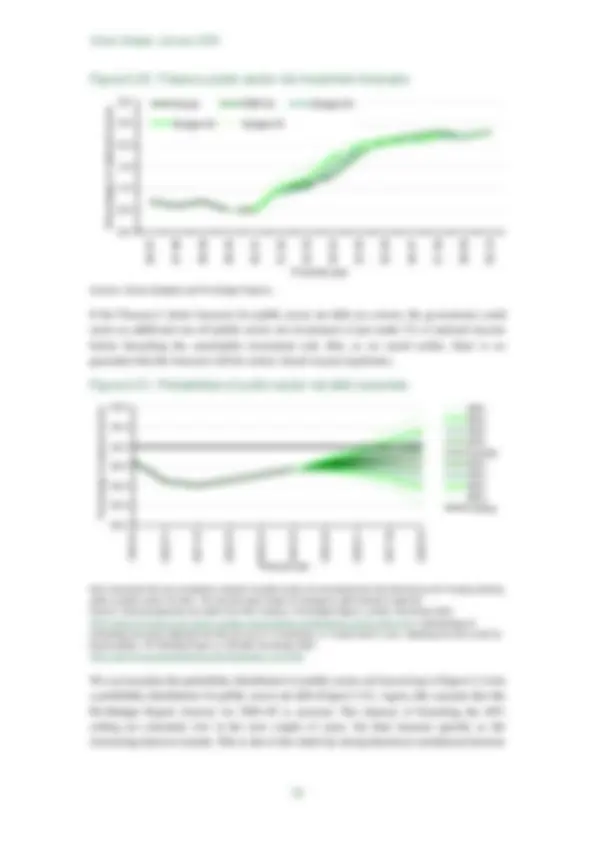
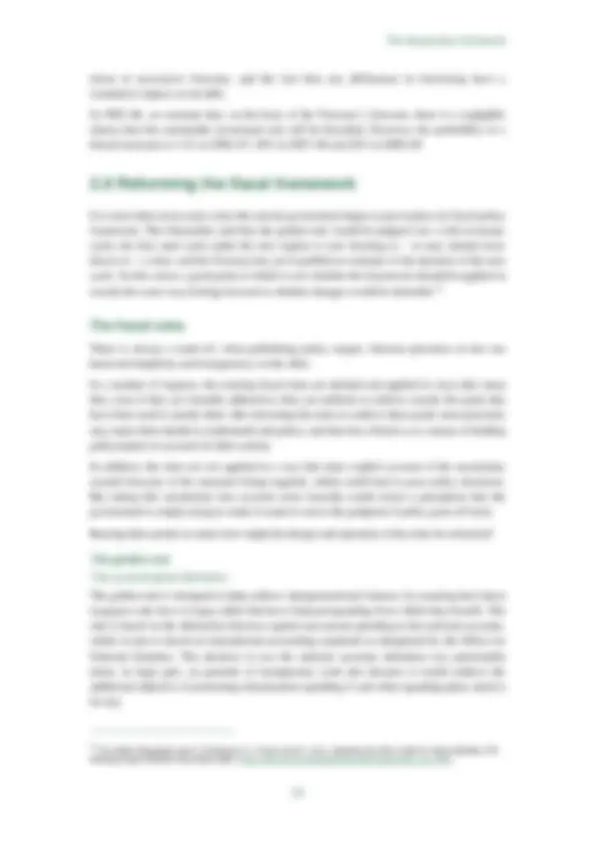
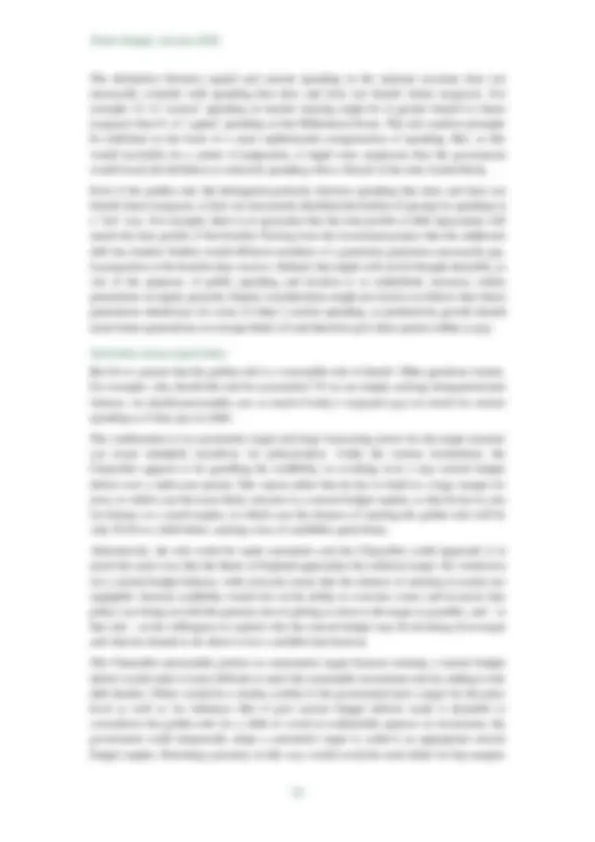
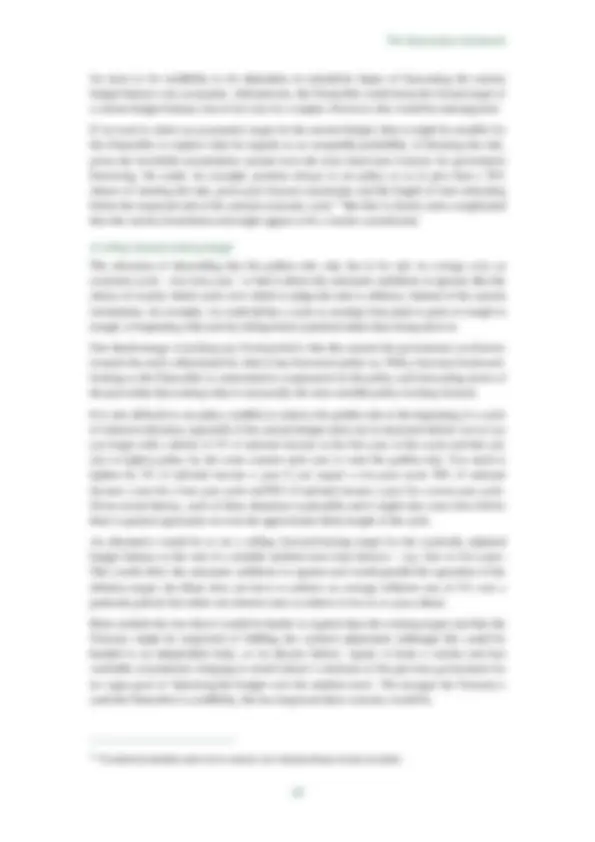
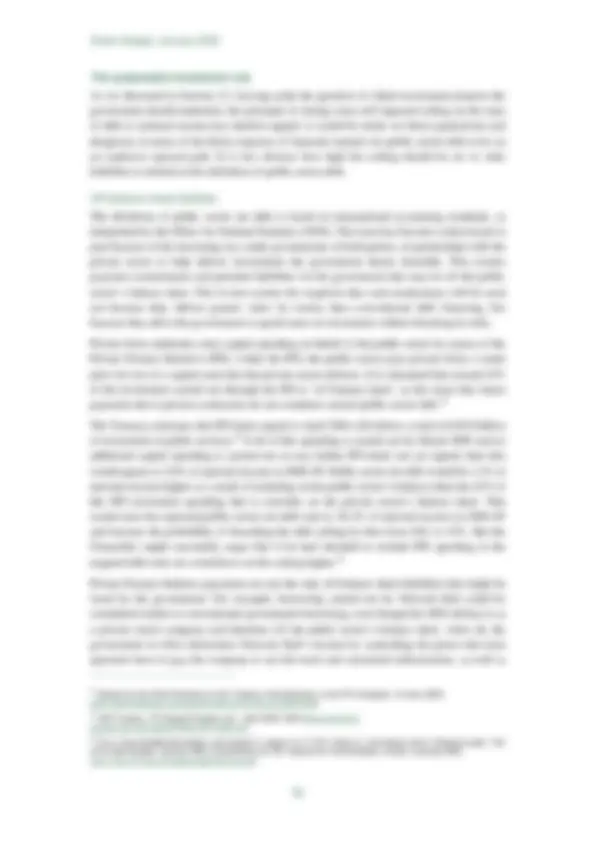
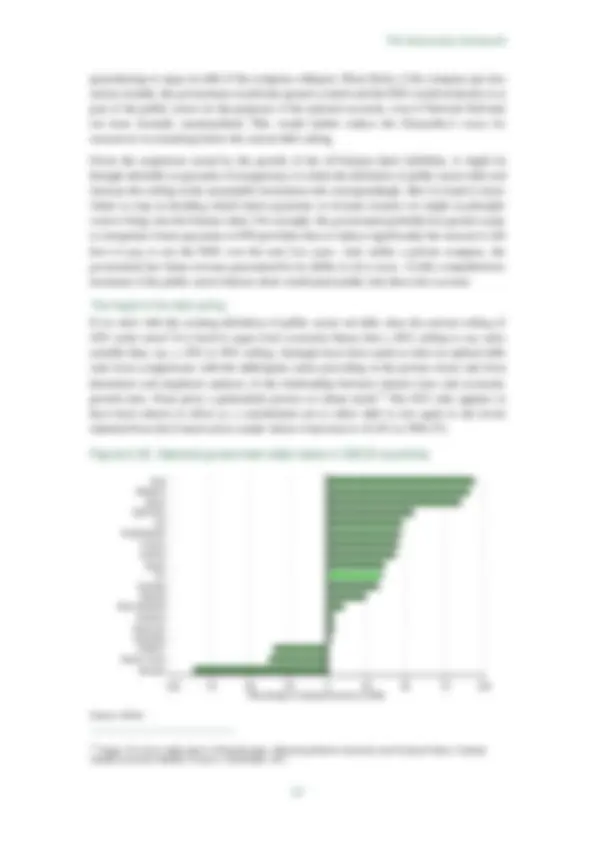
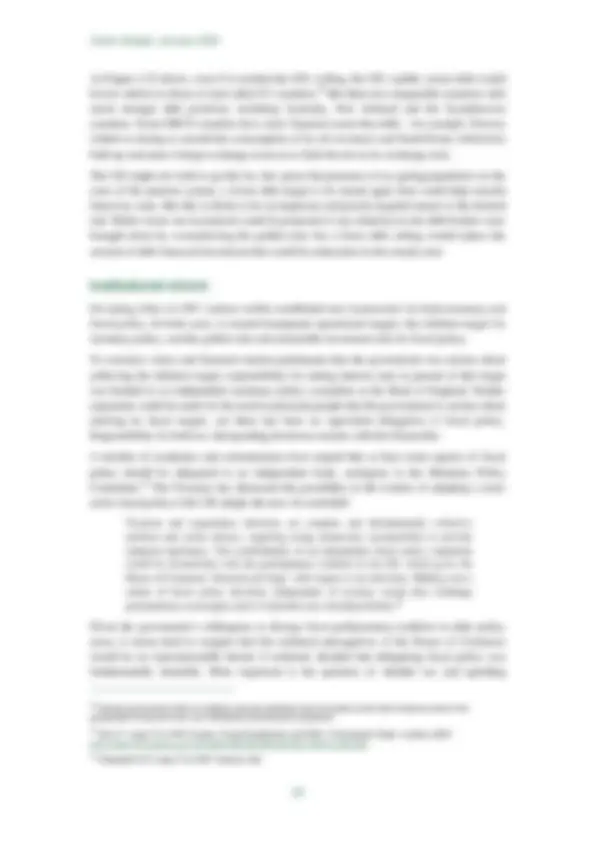
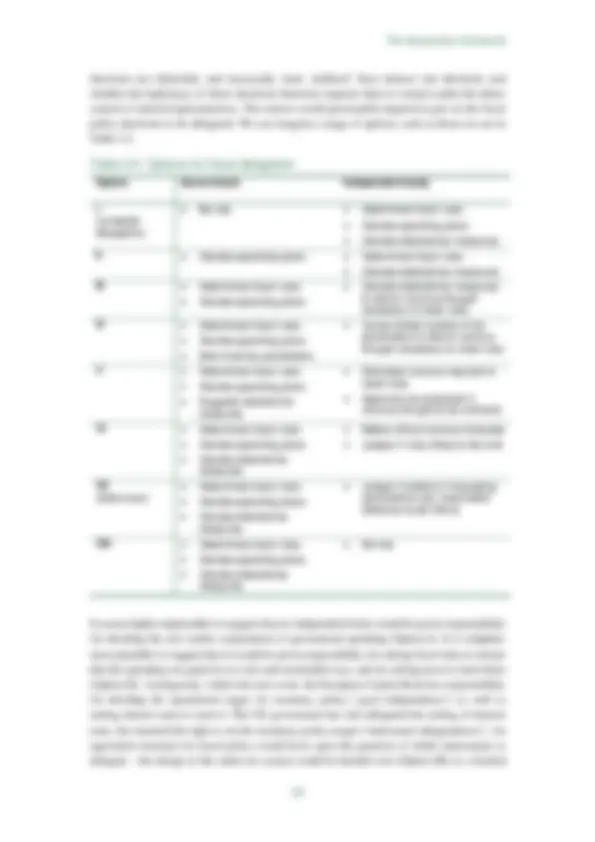
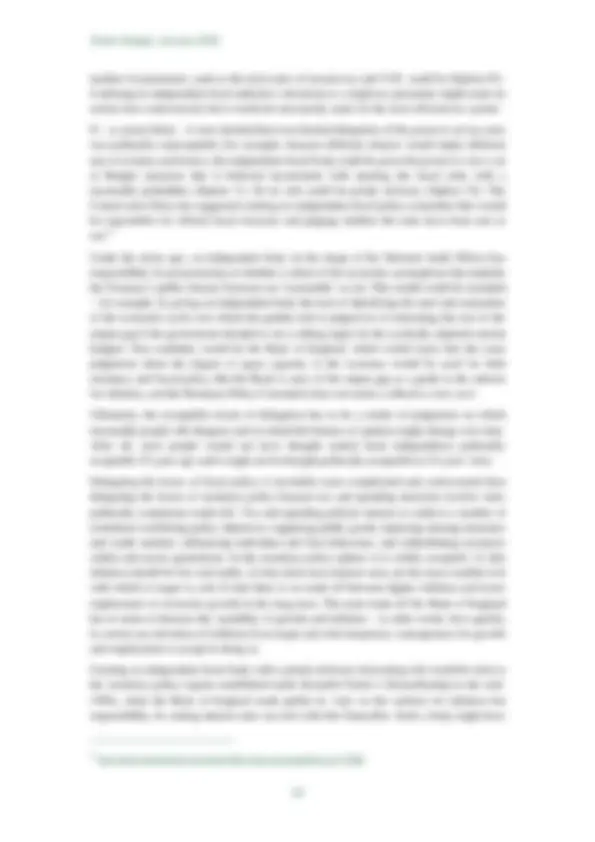
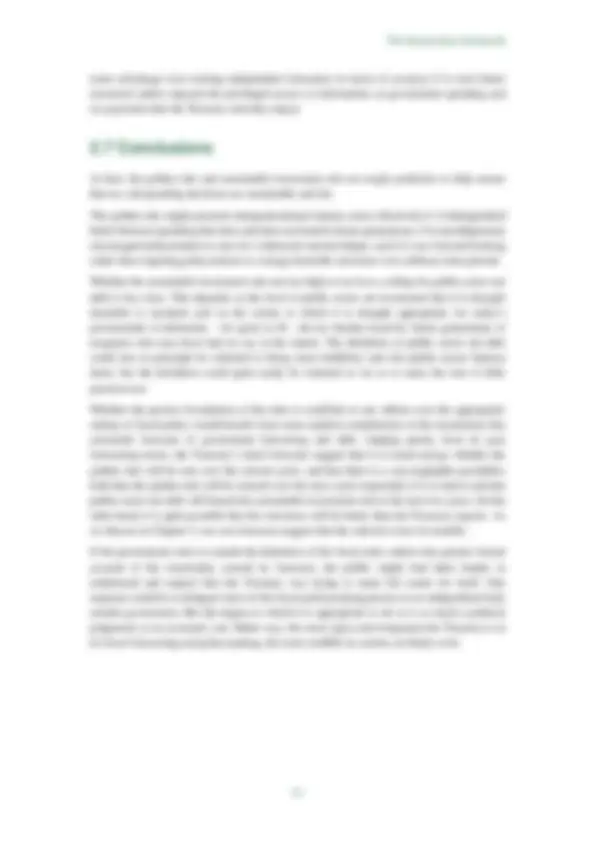


Study with the several resources on Docsity

Earn points by helping other students or get them with a premium plan


Prepare for your exams
Study with the several resources on Docsity

Earn points to download
Earn points by helping other students or get them with a premium plan
Community
Ask the community for help and clear up your study doubts
Discover the best universities in your country according to Docsity users
Free resources
Download our free guides on studying techniques, anxiety management strategies, and thesis advice from Docsity tutors
Data on the UK's public finances, including budget balance and percentage of national income for various financial years from 1999-00 to 2008-09. It also discusses the Treasury's forecasts for public sector net borrowing and debt ratio. The data is sourced from HM Treasury reports.
Typology: Study Guides, Projects, Research
1 / 36

This page cannot be seen from the preview
Don't miss anything!





























Robert Chote and Carl Emmerson (IFS)
The fiscal policy framework
2.1 Introduction
The purpose of this chapter is to discuss the policy framework within which the Chancellor takes his tax and spending decisions, and how his latest forecasts for the public finances compare with the requirements of that framework. In Chapter 3, we discuss the Treasury’s assumptions regarding the long- and short-term outlook for the economy on which these forecasts are based, highlighting the risks to its central expectations. In Chapter 4, we give our own forecasts for the public finances and ask if they are consistent with the policy framework.
This chapter begins by describing the rules the government has set itself to help demonstrate that it will manage the public finances in a fair and responsible way (Section 2.2). It then discusses the need for a forward-looking assessment of the impact of current government tax and spending policy on key measures of fiscal performance and describes the uncertainties around the Treasury’s forecasts of the public finances (Section 2.3). It then addresses how we should assess whether existing policies are consistent with meeting the rules now and in the future (Sections 2.4 and 2.5). Finally, it asks if the rules should be modified and whether institutional reforms are necessary to increase further the credibility of the government’s fiscal policymaking (Section 2.6). Section 2.7 concludes.
2.2 Gordon Brown’s fiscal rules
In 1998, Gordon Brown formally committed himself to two fiscal rules that – if adhered to – would potentially constrain his future tax and spending decisions: the ‘golden rule’ and the ‘sustainable investment rule’. 1 His aim was to persuade both voters and financial market participants that the public finances would be kept on a sustainable path and that his tax and spending choices would not impose an unfair financial burden on future generations. 2
The golden rule
The golden rule states that the government will only borrow to fund investment. This implies that tax revenues should equal or exceed current (or non-investment) spending. In other words, the so-called ‘current budget’ should be in balance or surplus.^3
The rationale of the golden rule is broadly to ensure that future generations of taxpayers are only asked to repay debt that has financed spending from which they themselves are likely to benefit (see Section 2.6). It is also intended to reduce the incentive for policymakers to make disproportionate cuts in infrastructure spending, if and when total spending plans have to be cut. Cutting capital spending is more tempting as it takes longer for voters to feel the effects. 4
(^1) A more detailed discussion of the government’s fiscal rules can be found in C. Emmerson, C. Frayne and S. Love, The Government’s Fiscal Rules , Briefing Note no. 16, Institute for Fiscal Studies, London, August 2004 (http://www.ifs.org.uk/bns/bn16.pdf). (^2) For more details, see HM Treasury, Analysing UK Fiscal Policy , London, 1999 (http://www.hm- treasury.gov.uk/media//89A63/90.pdf). (^3) The broadest measure of the budget balance – the difference between revenues and the sum of investment and current spending – is known as ‘public sector net borrowing’ or PSNB. (^4) For a discussion, see HM Treasury, Fiscal Policy: Current and Capital Spending , London, 1998 (http://www.hm- treasury.gov.uk/media/A97/77/530.pdf).
The fiscal policy framework
while current receipts rise by about 0.2% of national income. The net effect is to increase the current budget surplus (or shrink the deficit) by about 0.7% of national income. 7 Making this adjustment suggests that the swings in the current budget from deficit to surplus after 1993– 94 and back into deficit after 2000–01 were partly the result of swings in economic activity, but more due to underlying movements in receipts and current spending. This is shown in Figure 2.1 by the fact that a substantial proportion of the improvement in the current budget balance over this period was due to an improvement in the cyclically adjusted current budget balance.
The sustainable investment rule
The sustainable investment rule states that the public sector’s debt (net of its financial assets, which mostly comprise foreign exchange reserves) should be kept at a ‘stable and prudent’ level. The Chancellor currently defines this as no more than 40% of national income.
Despite its name, the sustainable investment rule does not give a straightforward answer to the question: ‘How much can the government invest?’. This will depend on the current level of debt, the degree to which the golden rule is over- or under-achieved (which in turn partly depends on how much the government has to spend servicing its existing debt), the inflation rate and the real growth rate of the economy. If we assume that the golden rule is met exactly, that whole-economy inflation is 2.5% a year and that the economy grows in real terms by 2.5% a year, then the government could sustain public sector net investment of 2% of national income a year while keeping public sector net debt at 40% of national income. 8 If the debt ratio starts below 40%, the government can invest more temporarily until it gets there.
Applying the sustainable investment rule is slightly more complicated, because the Chancellor has said: ‘To meet the target with confidence, at the end of every fiscal year of the current economic cycle, public sector net debt must be below 40% of GDP’. 9 This implies aiming for a debt ratio that is on average lower than 40% of national income, so that increases in the debt burden during periods when borrowing is inflated by an economic downturn can be accommodated. Next year, the Treasury predicts that the cyclical component of the debt ratio will be 2% of national income, on top of a cyclically adjusted ‘core’ debt of 33.4% of national income. If this is the maximum likely cyclical component of net debt, core debt would have to be kept below 38% of national income to keep net debt below the 40% ceiling.
In principle, it could be argued that the government should undertake any investment project for which the net social benefit exceeds the cost, whatever this implies for the debt ratio. But when a government increases the debt ratio, it is in effect imposing a tax increase on future generations (or requiring them to accept a lower level of public spending), whether or not those future generations believe that the spending financed by the extra debt was worthwhile. A ceiling on the debt ratio is in effect a self-imposed limit on the ability of today’s
(^7) See appendix A of HM Treasury, End of Year Fiscal Report , London, December 2003 (http://www.hm- treasury.gov.uk/media/324/70/end_of_year_352[1].pdf). (^8) Higher nominal growth in the economy, even if the result of higher inflation, would allow a higher level of real net investment. (^9) HM Treasury, Technical Note for the Treasury PSA 2005–2008 , London, 2004 (http://www.hm- treasury.gov.uk/media/EFF/68/julytechnicalnote_300704.pdf).
Green Budget, January 2005
governments to tax tomorrow’s taxpayers, which could be justified on fairness grounds or on the more practical basis that if future taxpayers feel they have been unreasonably overburdened, they may resort to inflation or default to reduce the debt burden – a possibility that can spook holders of government debt and prompt self-fulfilling expectations of a crisis.
Public sector net debt in recent years
Figure 2.2 shows that net debt dropped below 40% of national income early in Labour’s period in office, reaching a trough of just over 30% in 2001–02. By last year, it had risen back to nearly 33%, in part because below-trend economic activity was pushing up borrowing. Figure 2.2 also shows that in the last decade, public sector net debt has never differed from core debt by more than 1.4% of national income. However, in the early 1990s, core debt was nearly 7% of national income above public sector net debt, reflecting the fact that swings in economic activity were much more pronounced in the late 1980s and early 1990s than in the past decade. A return to cyclical swings of this magnitude – and to big gaps between core and net debt – would make a commitment to keep net debt below 40% much more constraining.
79–8081–8283–8485–8687–8889–9091–9293–9495–9697–9899–0001–0203– Financial year
Percentage of national income
Net debt Core debt 40% ceiling
Sources: HM Treasury, Pre-Budget Report , London, December 2004 (http://www.hm- treasury.gov.uk/pre_budget_report/prebud_pbr04/prebud_pbr04_index.cfm); HM Treasury, End of Year Fiscal Report , London, December 2004 (http://www.hm-treasury.gov.uk./media/8F5/65/pbr04end_year_456.pdf); HM Treasury, Core Debt: An Approach to Monitoring the Sustainable Investment Rule , London, April 2002 (http://www.hm-treasury.gov.uk./media/52F/5B/bud02_coredebt.pdf).
Having identified and looked at the recent performance of the Treasury’s target measures for government borrowing and debt, we now turn to the difficulties involved in forecasting them.
2.3 Forecasting the public finances
Facing up to uncertainty
When the government takes tax and spending decisions, it estimates their impact on borrowing and debt a number of years into the future, to assess whether they are consistent with meeting the fiscal rules. This forward-looking approach reflects the fact that changing tax and spending plans too often and too abruptly is undesirable. It can harm the economy and the efficiency of the public sector by imposing administrative costs, as well as by creating
Green Budget, January 2005
-2. -1.
99–00 00–01 01–02 02–03 03–04 04–05 05–06 06–07 07–08 08–09 09– Financial year
Percentage of national income
(^) Actual HM Treasury December 2004 Pre-Budget Report forecast
Sources: HM Treasury, Public Finances Databank , London, December 2004 (http://www.hm- treasury.gov.uk/media/F6C/7E/public_fin_databank_211204.xls); HM Treasury, Pre-Budget Report , London, December 2004 (http://www.hm-treasury.gov.uk/pre_budget_report/prebud_pbr04/prebud_pbr04_index.cfm).
But how confident can we be that this improvement will take place? The Treasury’s average absolute error in forecasting public sector net borrowing one, two, three and four years ahead for the period from 1977–78 to 2002–03 is shown in Table 2.1. This shows that even one year ahead, the average absolute error is £12.1 billion in today’s prices. 11
Time period Average absolute error (% of national income)
Average absolute error (£ billion) One year ahead 1.0 12. Two years ahead 1.7 19. Three years ahead 2.2 26. Four years ahead 3.0 34. Notes: Figures in £ billion are calculated assuming HM Treasury forecast for national income in 2004–05 of £1, billion. Average error corresponds to the average absolute error over the period 1977–78 to 2002–03 for one year ahead, 1981–82 to 2002–03 for two years ahead, 1982–83 to 2002–03 (excluding 1996–97 to 1999–2000) for three years ahead, and 1983–84 to 2002–03 (excluding 1984–85 to 1986–87 and 1997–98 to 2000–01) for four years ahead. Sources: Table 2.8 of HM Treasury, End of Year Fiscal Report , London, December 2003 (http://www.hm- treasury.gov.uk/pre_budget_report/prebud_pbr03/assoc_docs/prebud_pbr03_adend.cfm); authors’ calculations.
Errors in forecasting public sector net borrowing can arise either from errors in forecasting the strength and composition of economic growth (and therefore the impact of the automatic stabilisers) or from errors in predicting tax revenues and spending for any given level and composition of national income. Errors in forecasting economic growth have been relatively unimportant in explaining the Treasury’s errors in forecasting the budget balance over a horizon of at least up to four years.^12 Last year’s current budget deficit, for example, was £12.7 billion larger than the Treasury predicted at the time of the April 2003 Budget even
(^11) IFS forecasts show errors of similar magnitude. See C. Giles and J. Hall, ‘Forecasting the PSBR outside government: the IFS perspective’, Fiscal Studies , February 1998, vol. 19, pp. 83– (http://www.ifs.org.uk/publications.php?publication_id=2250). (^12) See table B13 of HM Treasury, Pre-Budget Report , London, November 1998 (archive.treasury.gov.uk/pub/html/prebudgetNov98/index.html).
The fiscal policy framework
though the Treasury’s forecasts for economic growth turned out to be relatively accurate. This was due to a £9.6 billion overestimate of government revenues and a £3.2 billion underestimate of current spending. 13
Reflecting uncertainty in published forecasts
If we assume that the Treasury’s latest forecasts will be as accurate as its past ones, that overestimates of borrowing are as likely as underestimates and that errors are normally distributed, we can put confidence intervals around the projections.
Figure 2.4 shows the probabilities of different outcomes for public sector net borrowing, based purely on the Treasury’s latest forecasts and its past forecasting performance. We assume that the Treasury’s projection for 2004–05 is correct, but that there is uncertainty thereafter. The presentation is analogous to the Bank of England’s inflation and growth forecasts in its quarterly Inflation Report.^14 The ‘central’ estimate is the forecast shown in Figure 2.3. Figure 2.4 shows that there is a 20% probability that the outcome will lie within the darkest bands either side of the central forecast, a 40% probability that it will lie between the next darkest bands, and so on. It shows, for example, that in 2008–09, there is a one-in- four chance that the deficit will be greater than 4% of national income and a one-in-three chance that the deficit will have been eliminated.
-4. -2.
99–00 00–01 01–02 02–03 03–04 04–05 05–06 06–07 07–08 08– Financial year
Percentage of national income
80% 60% 40% 20% Central 20% 40% 60% 80%
Sources: Central projections are taken from HM Treasury, Pre-Budget Report , London, December 2004 (http://www.hm-treasury.gov.uk/pre_budget_report/prebud_pbr04/prebud_pbr04_index.cfm), and assume that the forecast for 2004–05 is correct; methodology for computing fan charts taken from C. Emmerson, C. Frayne and S. Love, ‘Updating the UK’s code for fiscal stability’, IFS Working Paper no. W04/29, November 2004 (http://www.ifs.org.uk/publications.php?publication_id=3163).
The estimates of previous Treasury forecasting errors used in this analysis are likely to be underestimates of the true forecasting error. This is because the forecasts for borrowing have not been adjusted for subsequent tax and spending decisions. In practice during periods where
(^13) Table 2.7 of HM Treasury, End of Year Fiscal Report , London, December 2004 (http://www.hm- treasury.gov.uk/media/8F5/65/pbr04end_year_456.pdf). (^14) See, for example, Bank of England, Inflation Report , London, November 2004 (http://www.bankofengland.co.uk/inflationreport/ir04nov.pdf).
The fiscal policy framework
have been overoptimistic three years running (although less so than the preceding Budget forecast). If trends in receipts and spending seen over the first nine months of this financial year persist, the Budget forecast will again turn out around 1% of national income too optimistic.
-2.
-2.
-1.
-1.
-0.
1999–2000 2000–01 2001–02 2002–03 2003–04 2004– Financial year
Percentage of national income
Previous year’s Budget^ In-year Pre-Budget Report^ Actual
Sources: HM Treasury, various Budgets and Pre-Budget Reports.
It is also the case that if a forecast made for one year ahead turns out to be too optimistic or pessimistic, then forecasts made further ahead tend to have errors in the same direction. This is demonstrated by the fact that the forecast lines tend not to cross the actual borrowing line in Figure 2.6, which shows the longer run of Treasury forecasts.
-5.
76–7778–7980–8182–8384–8586–8788–8990–9192–9394–9596–9798–9900–0102– Financial year
Percentage of national income
(^) Actual
HM Treasury forecast
Source: Authors’ calculations, from data contained in HM Treasury, End of Year Fiscal Report , London, December 2003 (http://www.hm-treasury.gov.uk/pre_budget_report/prebud_pbr03/assoc_docs/prebud_pbr03_adend.cfm).
Table 2.2 shows the correlations between the errors in successive Treasury forecasts over time horizons of up to four years as far back as the late 1970s. They confirm that even successive forecasts looking four years ahead tend to err in the same direction from one forecast to the next.
Green Budget, January 2005
Years ahead: 1 2 3 4 1 1. 2 0.76 1. 3 0.53 0.89 1. 4 0.38 0.70 0.90 1. Note: Statistics on the one-year-ahead errors are constructed using all years’ out-turns from 1977–78 to 2002–03; statistics on the two-year-ahead errors use out-turns from 1981–82 to 2002–03; statistics on the three-year-ahead errors use out-turns from 1982–83 to 2002–03 except the years 1996–97 to 1999–2000; and statistics on the four- year-ahead errors use out-turns from 1983–84 to 2002–03 except the years 1984–85 to 1986–87 and 1997–98 to 2000–01. Source: C. Emmerson, C. Frayne and S. Love, ‘Updating the UK’s code for fiscal stability’, IFS Working Paper no. W04/29, November 2004 (http://www.ifs.org.uk/publications.php?publication_id=3163).
The Treasury should seriously consider presenting its forecasts in a fan chart or a similar form that incorporates confidence intervals. Referring to the Bank of England’s inflation forecasts, Andrew Haldane believes ‘a quantified distribution allows policy to be exercised in an explicitly probabilistic fashion’. 17 It would make it clear that no reasonable safety margin could ever guarantee that a fiscal rule will be met with 100% certainty. The best one can do is decide how large a probability of breaking the rule is tolerable and plan accordingly. Rather than focusing on whether the Chancellor is likely to ‘hit’ or ‘miss’ a rule, it would be more productive to analyse where the Chancellor chooses to aim within the probability distribution and to reach a judgement on whether he is pursuing the target with appropriate caution. So, for example, the Chancellor could publish a forecast based on central rather than cautious assumptions and then show the extent to which he was being cautious by demonstrating that there was a reasonable probability that borrowing would exceed a given amount.
The Treasury Committee of the House of Commons recommended such an approach in its report on the November 2002 Pre-Budget Report: 18
From the forthcoming Budget onwards, we recommend that the Treasury should present the projections of the public sector net borrowing, the current budget and the cyclically-adjusted current budget in the style of a ‘fan chart’, similar in style to those published by the MPC and the US Congressional Budget Office … We believe the adoption of fan charts would greatly enhance the presentation and transparency of the public finance projections.
But the Chancellor did not agree.
Having assessed the confidence that we should place in the Treasury’s forecasts for borrowing, we now ask what this implies for assessing the chances of meeting the fiscal rules.
(^17) A. Haldane, ‘Ghostbusting: the UK experience of inflation targeting’, International Monetary Fund seminar paper, March 2000 (http://www.imf.org/external/pubs/ft/seminar/2000/targets/Haldane.pdf). (^18) The report (HC 159) is available at http://www.publications.parliament.uk/pa/cm200203/cmselect/cmtreasy/159/159.pdf and the government response (HC 528) can be found at http://www.publications.parliament.uk/pa/cm200203/cmselect/cmtreasy/528/528.pdf.
Green Budget, January 2005
-8.
-6.
-4.
-2.
1973197519771979198119831985198719891991199319951997199920012003200520072009 Year
Percentage of potential output
Current cycle
Note: Actual output less trend output as a percentage of trend output (non-oil basis). Source: HM Treasury (consistent with December 2004 Pre-Budget Report).
The Treasury conceded in the Pre-Budget Report that its estimate of the output gap is larger than that of many independent forecasters. The Bank of England does not publish a formal estimate of the output gap, but Mervyn King, the Governor, argued in October that there was ‘little if any spare capacity’ left in the economy. 22 The OECD estimates that output was already 0.4% above potential in 2004. 23 Chapter 3 discusses the uncertainty surrounding the shape of the economic cycle and the size of the output gap in detail. Using a statistical technique that generates a similar start date for the cycle to that used by the Treasury, it is estimated that the output gap closed in the first half of 2004 and that the economy is now running at or slightly above potential. This suggests that there was a six-financial-year cycle running from 1999–2000 to 2004–05. Given the uncertainty surrounding the size of the output gap, it would be helpful if the Treasury could attach confidence intervals to its estimates and discuss the implications for the possible dating of the cycle.
The golden rule and the current cycle
Let us assume the Treasury is correctly dating the current cycle and that it covers the seven years from 1999–2000 to 2005–06. Do its forecasts suggest the golden rule will be met?
Over the first five years of the cycle, the current budget has averaged a surplus of 0.4% of national income. As we can see in Figure 2.8, in the latest Pre-Budget Report, the Treasury predicted deficits of 1.1% of national income this year and 0.6% in 2005–06. This would reduce but not eliminate the surplus, leaving the rule to be met by an average of less than 0.1% of national income or a cumulative £5 billion in today’s money. The Treasury argues that its true room for manoeuvre is slightly larger, at around £8 billion, because its non- investment spending plans for this year and next include an as-yet unallocated £3.5 billion contingency reserve for unexpected needs. But even £8 billion is still smaller than the average forecasting error for the current budget balance one year ahead.
(^22) Speech at the Eden Project, Cornwall, 12 October 2004 (http://www.bankofengland.co.uk/speeches/speech229.pdf). (^23) OECD Economic Outlook , November 2004 (http://www.oecd.org/document/18/0,2340,en_2825_293564_20347538_1_1_1_1,00.html).
The fiscal policy framework
£19.6bn £20.5bn
£9.4bn
–£13.9bn
–£12.5bn
–£6.9bn
-2.
-2.
-1.
-1.
-0.
99–20 00–01 01–02 02–03 03–04 04–05 05– Financial year
Percentage of national income
Actual HM Treasury December 2004 Pre-Budget Report forecast
–£20.7bn
Source: HM Treasury, Pre-Budget Report , London, December 2004 (http://www.hm- treasury.gov.uk/pre_budget_report/prebud_pbr04/prebud_pbr04_index.cfm).
The Chancellor has steadily downgraded his forecasts for the current budget balance in recent years (Figure 2.9). This has significantly reduced the room for manoeuvre with which he expects to meet the golden rule (Figure 2.10). Three-and-a-half years ago, the Chancellor forecast that the golden rule would be overachieved by a margin of £118 billion, assuming that the contingency reserve is spent, as it has often been in the past. Just under a quarter of the decline to the current estimate of £5 billion is due to policy measures (mostly increases in current spending), with the rest due to unfavourable forecast revisions (mostly disappointing tax revenues).
-2.
-2.
-1.
-1.
-0.
1999–2000 2000–01 2001–02 2002–03 2003–04 2004–05 2005– Financial year
Percentage of national income
PBR 2004 Budget 2004 Budget 2003 Budget 2002 Budget 2001
Sources: Successive Budgets and Pre-Budget Reports.
The fiscal policy framework
Source: Central projections are taken from HM Treasury, Pre-Budget Report , London, December 2004 (http://www.hm-treasury.gov.uk/pre_budget_report/prebud_pbr04/prebud_pbr04_index.cfm), and assume that the forecast for 2004–05 is correct; methodology for computing fan charts taken from C. Emmerson, C. Frayne and S. Love, ‘Updating the UK’s code for fiscal stability’, IFS Working Paper no. W04/29, November 2004 (http://www.ifs.org.uk/publications.php?publication_id=3163).
Figure 2.12 uses this method to show how the probability of meeting the golden rule over the current economic cycle has changed in recent Budgets. The horizontal axis shows the expected average current budget surplus over the present economic cycle as a share of national income, namely the average of the actual or expected current budget surpluses as shares of national income for the seven years from 1999–2000 to 2005–06. The vertical axis then gives the probability that the golden rule will actually be met if forecasting performance in the future mirrors the past. In other words, given the number of years of the economic cycle remaining and the expected size of the cumulative surplus, the vertical axis shows the likelihood that the final cumulative budget balance will be zero or positive. Because we assume that the forecast errors are not biased in either direction and that the distribution of errors is symmetrical, a forecast cumulative surplus of exactly zero means a probability of meeting the golden rule of exactly 50%: underachievement is as likely as overachievement. This is the case regardless of the number of years remaining when the forecast is made. We also exclude the possibility that the Chancellor will choose to implement new measures to increase the cumulative surplus in the event of disappointing out-turns. So the probabilities on Figure 2.12 show the likelihood of meeting the rule without policy changes.
With four years of out-turns to come, the Budget 2002 prediction of an average surplus of 1.1% of national income implied an 82% probability of the expected average surplus remaining positive or zero and of the rule being met. As the expected average surplus fell to 0.5% of national income in Budget 2003 and 0.1% in Budget 2004, so the probability of meeting the rule fell to 74% and then to 59%. Interestingly, although the cash margin by which the rule was expected to be met fell more sharply in Budget 2003 than in Budget 2004, the probability of meeting the rule fell more sharply in Budget 2004 than in Budget 2003.
To reiterate, these probabilities are based entirely on the uncertainty that the Treasury might place around its own forecasts if it were to assume that its forecasting performance will be the same in the future as in the past. The probabilities would be different if a different view was taken from the Treasury’s about the evolution of the economy or about the likely size of
-6.
-4.
-2.
99–00 00–01 01–02 02–03Financial year03–04 04–05 05–06 06–07 07–08 08–
Percentage of national income
80% 60% 40% 20% Central 20% 40% 60% 80%
Green Budget, January 2005
revenues and spending for any given state of the economy. We discuss the outlook for the economy in Chapter 3 and generate our own forecasts for the public finances in Chapter 4.
Budget 2004
Budget 2003 (^) Budget 2002
0%
10%
20%
30%
40%
50%
60%
70%
80%
90%
100%
-0.5 -0.4 -0.3 -0.2 -0.1 0.0Expected average current budget surplus over seven-year cycle, 0.1 0.2 0.3 0.4 0.5 0.6 0.7 0.8 0.9 1.0 1.1 1.2 1.3 1. % of national income
Probability of meeting golden rule
1yr remaining 2yrs remaining 3yrs remaining 4yrs remaining 50/50 chance
Source: The Budget projections marked on the graph are taken from various HM Treasury Budgets. Methodology for computing probabilities taken from C. Emmerson, C. Frayne and S. Love, ‘Updating the UK’s code for fiscal stability’, IFS Working Paper no. W04/29, November 2004 (http://www.ifs.org.uk/publications.php?publication_id=3163).
The cumulative surplus (or deficit) over the cycle expected in Budget 2005 – and the implied probability of meeting the golden rule with just a year to go – will depend on the out-turn for the current budget deficit this year, plus any revisions to past data and next year’s forecast. Figure 2.13 shows the probability of meeting the rule for different values of the current budget deficit this year, first assuming that the Treasury leaves the 2005–06 forecast as it was in the latest Pre-Budget Report (‘forecasting error one-off’) and second assuming that the Pre- Budget Report prediction for next year’s deficit is revised proportionately with any forecast error this year (‘forecasting error persists’).
Pre-Budget Report forecast
0%
10%
20%
30%
40%
50%
60%
70%
80%
90%
100%
-3.0 -2.8 -2.6 -2.4 -2.2 -2.0 -1.8 -1.6 -1.4 -1.2 -1.0 -0.8 -0.6 -0.4 -0.2 0. Current budget deficit in 2004-
Probability of meeting golden rule
Forecasting error one-off Forecasting error persists 50/50 chance
Source: Authors’ calculations.
Green Budget, January 2005
indeed abolish ‘boom and bust’ and that this economic cycle will be the last (see Figure 2.7). It therefore assumes that the output gap will be zero in 2006–07 and beyond. As a result, the cyclically adjusted current budget balance will be equal to the actual balance from 2007– (since both the current and lagged output gap affect the current budget balance).
-3.
-2.
-1.
99–00 00–01 01–02 02–03 03–04 04–05 05–06 06–07 07–08 08–09 09– Financial year
Percentage of national income
Actual December 2004 Pre-Budget Report forecast Cyclically adjusted surplus
Next cycle
Sources: HM Treasury, Pre-Budget Report , London, December 2004 (http://www.hm- treasury.gov.uk/pre_budget_report/prebud_pbr04/prebud_pbr04_index.cfm); HM Treasury.
We can see that the Treasury expects the current budget balance to swing back into the black over the next five years – above and beyond any improvement that occurs automatically as the economy temporarily enjoys above-trend growth while remaining spare capacity is used up. The Treasury expects us to move from a cyclically adjusted deficit last year of 1% of national income (the largest since Labour came to power, although still less than the 2.4% of national income that it inherited in 1996–97) to a surplus of 0.8% of national income in 2009–
But, of course, these forecasts could turn out to be wrong. We can in principle use the Treasury’s past forecasting record to determine the probability that the rule will be met, but this will depend on the expected length of the next economic cycle. This is clearly uncertain – on Treasury estimates, the current cycle is expected to last seven years, the previous one two years and the one before that 11 years. The analysis in Chapter 3 suggests that it is reasonable to expect a cycle to last six years, broadly in line with the recent average. Unfortunately, we only have information on the Treasury’s forecasting performance up to four years ahead, which means we can only assess the probability of meeting the golden rule over that period. If we assume that any cyclical impact on the current budget deficit washes out over the cycle – which should broadly be the case if the Bank of England keeps the inflation rate roughly stable and if the magnitude of any above-trend activity is similar to the magnitude of any below-trend activity – the Treasury would expect to record a surplus averaging 0.4% of national income in a cycle running from 2006–07 to 2009–10. On past performance, the probability of meeting the golden rule over this period would be 57%.
The fiscal policy framework
Explaining the return to surplus
But where do the mounting surpluses that the Treasury expects beyond 2006–07 come from?
Not from cuts in public spending, although the rapid increases of recent years are coming to an end. The Pre-Budget Report estimates that current spending (including depreciation) stood at 39.4% of national income last year. It is expected to edge up to 39.9% in 2007–08, which is the final year covered by the last spending review, before dropping back to 39.7% in 2009–
96–9797–9898–9999–0000–0101–0202–0303–0404–0505–0606–0707–0808–0909– Financial year
Percentage of national income
Cyclically adjusted current receipts Cyclically adjusted current expenditure
Notes: Current expenditure includes spending to offset depreciation. The cyclically adjusted figures for public sector current expenditure and current receipts were obtained using the ‘ready reckoner’ formula in table A5 of HM Treasury, End of Year Fiscal Report , London, December 2003 (http://www.hm- treasury.gov.uk/pre_budget_report/prebud_pbr03/assoc_docs/prebud_pbr03_adend.cfm). Sources: HM Treasury; authors’ calculations.
With spending broadly static as a share of national income, after adjusting for the cycle, the fiscal tightening intended by the Treasury has to be taking place on the tax side. Following a sharp drop in the share of national income taken in tax between 2000–01 and 2002–03, the government is now expecting current receipts to rise from 37.5% of national income in 2003– 04 to 40.5% in 2009–10, their highest level since the late 1980s. Adjusted for the economic cycle, current receipts are projected to rise by 2.7% of national income over this period, more than accounting for the planned 1.7% of national income net fiscal tightening. As discussed in Chapter 6, this is not due to any explicit tax-raising measures, unlike a large part of the increase in tax revenues seen since 1996–97.
The Treasury says that this rise in the underlying tax burden is in part the result of economic factors that are not captured in conventional cyclical adjustment, notably a rebound in tax revenues from companies and employees in the financial sector. The structural increase in current receipts may also reflect the government’s efforts to collect more of the tax that it believes it is due – for example, by cracking down on VAT fraud and avoidance. For instance, the government estimates that it failed to collect 15.8% of the £80.7 billion in VAT it was